3 Michelin starred dining at the very heights of gastronomic experiences available in the world today
What happens if you combine ingredients from the finest parts of the globe, mix classic French and Japanese cooking recipes and execute with techniques in the precision hands of a German chef who has held 3 Michelin stars since 2005? The answer is one of the most transcendent food experiences available on this planet which this was without a shadow of doubt. A top-level wine list, delivered by world-class hospitality staff and a 3 star chef in the kitchen finalising all the dishes off the pass every day, leads me to sadly raise the benchmark so high that one of the notable knock on effects is that many places I now visit, whilst often excellent in themselves, produces the thought of, “It’s just not Christian Bau”. It will be very difficult for me to re-experience this sort of level again I’m sure and if you are keen on superlative food, I can only recommend that you visit here at least once in your life, for all the reasons in the expansion button below for full details (heads up: this is a long review as is befitting the menu). In summary, this visit was one of the best had in life.
First off, the journey. If you are flying from London, the very best way to get to Schloss Berg is from London City Airport, a very small and under-utilised airport in East London, easily accessible by the Docklands Light Railway (DLR). A direct flight to Luxembourg is the answer at 50 mins, followed by a 30 min taxi or hour+ bus journey to the border of Luxembourg and Germany where, literally 1 mile over that border in Germany is this restaurant, contained within the same grounds of a hotel (separate buildings and businesses). As all public transport in Luxembourg is free (yes, genuinely) and time was not an issue, the public transport option was taken advantage of (requires one change) and then in to a taxi from the border for the last mile into Germany. If you are immediately turned off by the sound of the journey, for perspective, it was actually quicker getting to this venue in Germany from the UK than it is driving from London to Bristol.
Victor’s Fine Dining itself is names after the backers and owners of the group who spotted Christian Bau’s talent a long time ago. The fine dining concept works very well for Christian as his level of cooking attracts people from many countries across the globe and therefore required a place for people to stay nearby which the hotel complex (Schloss Berg) does perfectly adequately. I forgot that in many German hotels, guests checking in are served a glass of something as a welcome and is such a simple and lovely touch that costs the hotel hardly anything but has a huge impact on the guest to have whilst waiting for check in – it always makes me wonder why so many hotels do not do this lovely, simple fix.
So, on to the evening meal which began with champagne and as Krug was sold by the glass (a lovely touch that many restaurants do not / cannot do). The first canapes were a carrot soup with coriander and green apple and the other being a tartare of langoustine with a madras curry sorbet with yoghurt foam. The carrot soup had pure and refreshing flavours, but the curry sorbet, foam and langoustine canapé was one of the greatest I have ever had as an opener. Immediately, one is hit by the surprising flavour of the sorbet being curried and offset perfectly by the yoghurt foam and the cold canapé itself working in utterly perfect harmony.
This was followed by a small pastry case of beef tartare with fish emulsion and smoked horseradish and caviar. An absolutely brilliant level of smoke in the horseradish which produced a superb play with the Ox tartare canapé. The accompanying canapé was Hamachi (yellow tail tuna) on rice wrapped around with kimbap (a South Korean version of nori seaweed) served with sesame and daikon (Japanese radish), the Hamachi being mild and buttery at the same time. The quality of the kimpab alone being one of the great pleasures (this is crispy and fragrant excellence akin to nothing like your average and totally inadequate rubbery, cold, seaweed elastic band found in many a sushi chain in the UK for example).
Next came a tartlet of toro (fatty tuna belly), caviar and myogo (Japanese ginger) which was perfectly judged with the heat from the ginger, followed by a sublime lobster tartlet decorated with printemps (seasonal Springtime flowers/garnishes). Finally for the canapés was a Japanese pastry waffle topped with Saba (blue mackerel), caviar, and yuzu-koshu (a Japanese chilli paste with strong, floral, yuzu fruit notes). The sweet citrus complimented and offset the oily fish superbly, joined by the salt from the caviar and textural crunch from the pastry. These were just the canapés and already were easily better than a great many main courses at other 2 and 3 Michelin starred restaurants experienced.
Next came the fish courses. Crab from Brittany was first, served with dashi-soaked melons (dashi is a Japanese stock very often using bonito / dried tuna flakes), Yuba (dried tofu skin) and shoyu, a form of wheat-based Japanese soy sauce. You would think the above might be a little too much for the light white meat from the crab but this was absolutely not the case – the combination was just right and came together brilliantly. Following this were oysters served in the half shell with red shiso pearls (iced droplets made with red shiso leaf), ponzu and sea herbs. Whilst I wished to avoid the oysters, the technique and skill here as well as supporting ingredients were among the freshest one can have to compliment the fish-based components including the stock.
Next came what was to be a gastro life-moment: Spanish tuna (from Malaga), topped with a foie gras sorbet, thin pastry disc and frozen foie gras shavings, dressed with a ponzu and elderflower dressing. I have to pause here as I write. I have no idea where or how Christian Bau conceived the idea of the flavour combinations for this dish, but I think perhaps dark magic of some kind… You know, the instant something has been experienced when it is a world first, and this was immediate bliss of total flavour harmony with absolute technical genius in being able to make something so rich and heavy as foie gras, somehow to be so light and surprisingly wonderful in its sorbet state. I believe Mr Bau should be in line for a medal of recognition for this dish alone and dishes of this calibre are rare to come by. This was a euphoric food moment to have had, accompanied by a glass of the powerhouse 2009 Egon Müller Reisling. I need a break from writing to recess, just thinking of this part of the meal.
The following course was green asparagus from Province topped with sumak gel (made from Japanese berries) and served with a miso hollandaise sauce and yuzu. The miso twist on hollandaise made for an umami bomb of wonderful, foamy hollandaise and the asparagus themselves were impressive in their own right. This was the best asparagus dish I have ever had and I simply cannot think how it is possible to make a dish of asparagus better, period. Another fish course followed with langoustine (sourced from Guilvinec in North West France), served with koji and caviar which was pleasant and delicately presented.
A wonderful piece of Brittany turbot (from a large 8kg turbot) came next, served with white asparagus, morel mushrooms, vin jaunt sauce (creamed made with dessert wine) and peas. This was a return to something classic and as such an iconic dish, I was glad that there was no, notable fusion with Japanese ingredients in homage to the iconic dish it is. Succulent turbot was complimented superbly by the well-judged classic components.
A special knife selection was offered to choose from to devour the main event of meat which was Miyazaki beef, which is widely regarded as very best in wagyu, frequently voted better than Kobe beef or even Matsuzaka. The Miyazaki prefecture is in the very south of Japan on the most southern of its four main islands (Kyushu) where the prized cattle are reared much longer than the average length of time for beef and served on diets that would make most humans in some parts of the world envious, hence the sheer quality of this meat. The dish was served with trevisiano (a form of red chicory), black garlic, truffle, tiny disc of foie gras and micro potato waffles. Everything was frankly delicious and with that line up of ingredients, the dish was never going to be in danger of rejection, and thankfully was small in size as very rich in content. I can’t be sure if I would have been equally happy with literally just the slice of beef when the produce of a something of such value is that superb, but it was wonderful to have.
Continuing the richness and savoury trend, the next course was a celebration of goose liver. Goose liver foie gras from Landes, was served in an amazing way by being served as frozen droplet spheres (essentially little foie gras ice cream balls), served with coffee, hazelnut from Piemonte and sour cherry and with a side of goose liver parfait sorbet and toasted brioche drum. The foie gras was technically faultless, delicious and the supporting sorbet another wonder moment. Although by this stage I was reaching maximum capacity in stomach real estate, this was another masterclass of goose liver and the brioche was another showcase, as was the very best brioche experienced anywhere. Its utterly delicate texture beat several 3 Michelin starred restaurants in France for the execution and presentation of the brioche.
Finally, the desserts started with a genuine firework bang on the opening dessert: wild strawberries, in a strawberry and sake consommé, served with sorrel sorbet, goats yoghurt and pastry disc for texture. The depth of strawberry flavour was off the scale, boosted by the mixed sake consommé and balanced beautifully by the fresh, herbal sorrel sorbet and cooling goats yogurt. An absolute knock out dessert. Following this and in tribute to the executive chef’s homeland, a play on black forest gateaux was served with ingredients taken from none other than the famous Black Forest of Southwest Germany (state of Baden-Württemberg) including aerated chocolate, hazelnut ice cream, iced cherry droplets and cherry gel, topped with a pastry in the shape of the cherry blossom tree. A this stage, heads were simply shaking at just how good this meal had been.
A final selection of superb petit fours were presented. There were too many to take note of sadly and by this stage I could only sample a few, but the ones that were enjoyed could frankly outdo dessert courses in quite a few restaurants of note. The bill came to £492 per person including Krug champagne and glasses from two, premium Rieslings and all bottled water (which can add up at €11 each and knock on to service charge), tax and overall service charge for this ‘Paris to Tokyo’ menu carte blanche (additional dishes selected by the executive chef). It’s worth noting that it is possible to have a menu here for €249 (£210) without various ingredients including asparagus and miso etc. The latter would frankly be a steal, but either way, for the quality of ingredients and sheer brilliance of execution, both these represent extremely good value for money in my opinion when examining the return and noting how you could comfortably spend either price tags on menus at lower grade restaurants that boast their prices at far too high a level for actual offering.
This was one of the highest-level food experiences on record with moments of undeniable perfection. Although I have recommended to go once in your life, it is a place I could comfortably revisit numerous times, now that I know what stratospheric level the team are operating on and just how cherished the experience will be.
Food Grade: 99%
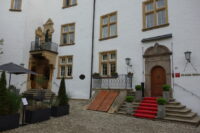


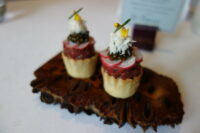
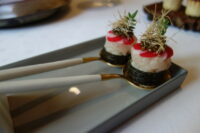
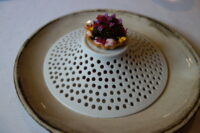
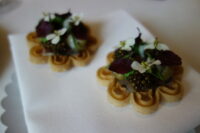
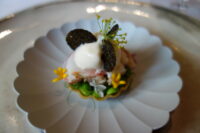
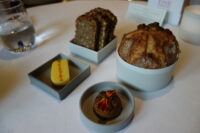
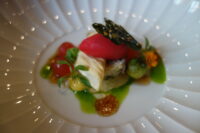
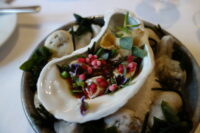
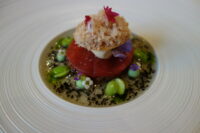
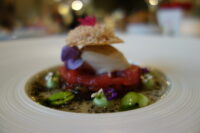
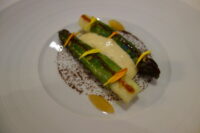
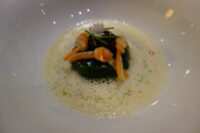
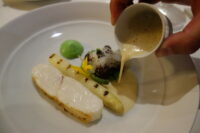
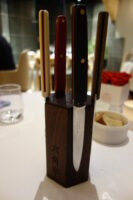
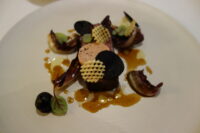
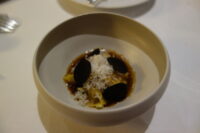


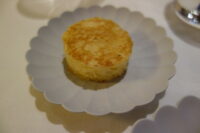

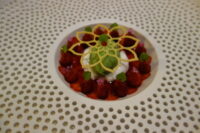
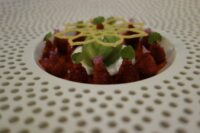
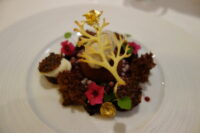
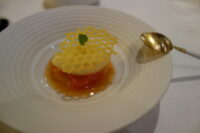
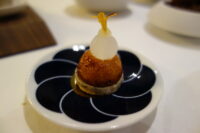
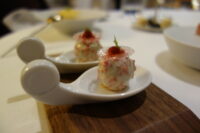
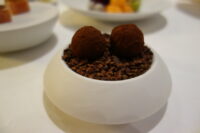
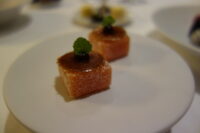

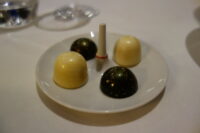
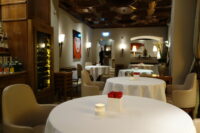
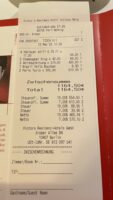
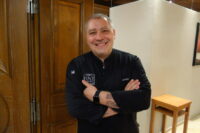
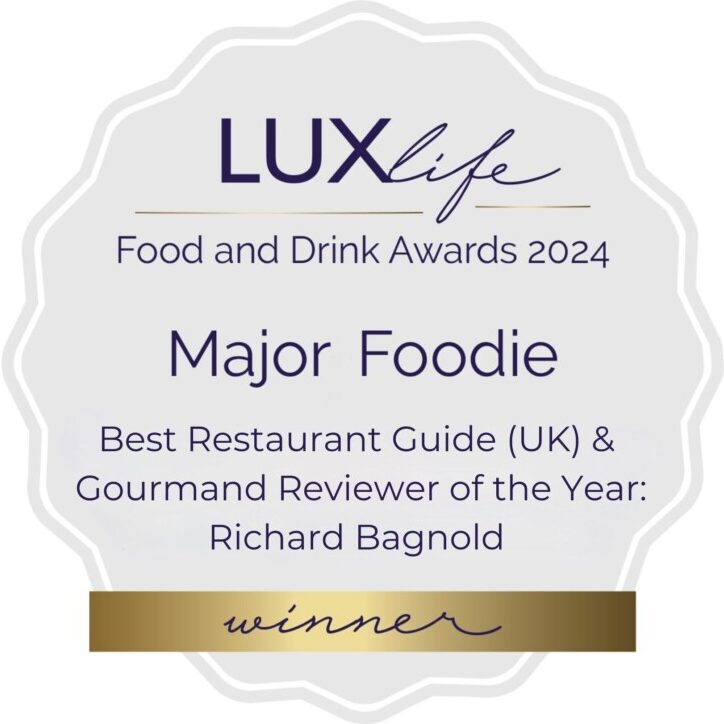 My hobby-turned-passion began to evolve during my assignments to London where I was fortunate enough to be able to explore all the Michelin starred restaurants in my spare time and as a result, I gradually built up a catalogue of all these venues.
My hobby-turned-passion began to evolve during my assignments to London where I was fortunate enough to be able to explore all the Michelin starred restaurants in my spare time and as a result, I gradually built up a catalogue of all these venues.
Leave a Review of this Restaurant